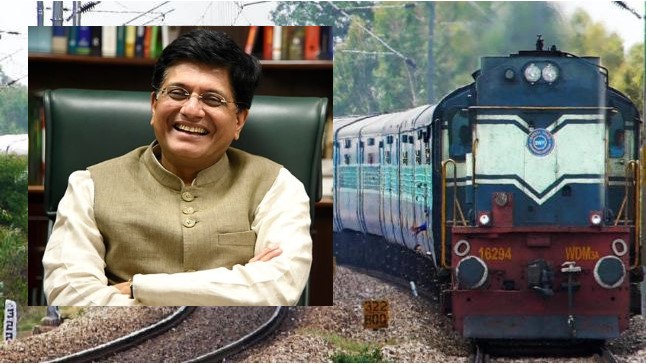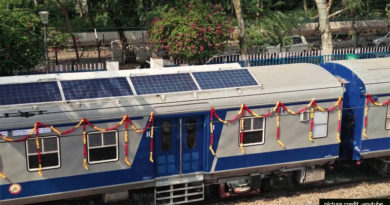Railways to Go 100% Electric in 10 Years: Piyush Goyal
 Railways to Go 100% Electric in 10 Years: Piyush Goyal
Railways to Go 100% Electric in 10 Years: Piyush Goyal
Railway Minister Piyush Goyal has announced that the government has decided to put a deadline for 100 percent electrification of the railways. He says that the government plans to complete this feat in 10 years, by 2029-30.
The electrification of the train network also means that the trains will run on renewable energy. “We have decided to move towards 100 percent electrified railway. We will be the world’s first large railways…nearly 1,20,000 kms of track, which will be 100 percent electrified. Imagine how much carbon we will reduce from the entire atmosphere,” Goyal said at a CII sustainability summit, according to PTI report.
In January, during an IEA event, Mr. Goyal highlighted that Indian Railways plans to convert diesel locomotives to electric locomotives for 100 percent electrification the the Indian Railways. He informed that railways had electrified about 4000 km of tracks across the country with another 6000 kms aim. According to IEA, railways have the lowest energy intensity among other transport modes, and stands at 4.1 Toe per million passenger and the Indian Railways demand is less than 5 Mtoe. In 2018-19, Indian Railways consumed about 20.44 billion units of electricity and 3.1 billion litres of high-speed diesel (HSD) for its energy requirement.
In June, Siemens announced that it will provide Indian Railways upgraded electric locomotives from 6000 HP to 9000 HP, and ABB announced that it has won a Rs 270 crore order for train technologies in February. To reach its carbon neutrality status, railway infrastructure like stations in New Delhi , Manwal and Secundrabad have been certified as green.
For renewable energy, 4 GW of Renewable energy tenders are also in the pipeline. To protect the environment, it recently banned plastic bottles and has installed bio toilets.
In the period 2014-15 for which data is available, the railways consumed 2780 million litres of diesel, one of its biggest cost heads. Considering all the expansion plans, new trains and more, this consumption number is widely expected to start falling only from 2019-20 onwards. Going green will have other benefits too as higher crude oil prices have already stretched the railways and government finances significantly.
On the scale of modernisation and transformation, Indian Railways has been able to ramp up renewal of tracks to 476 km every month. In the last 64 years, freight loading has increased by 1,344%, while passenger travel in terms of kilometres has increased 1,642%. The total investments in 2013-14 for railway infrastructure was at Rs46,000 crore, while for 2018-19 it will be Rs 1.4 trillion.



